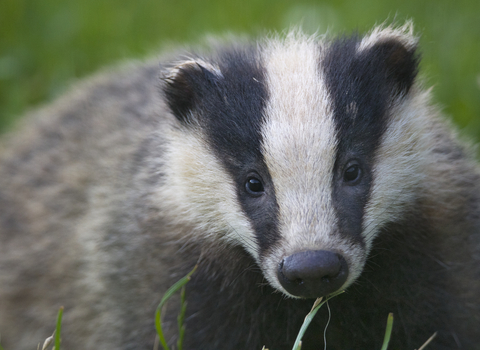
©Luke Massey/2020VISION
UK Wildlife Law
Below are some of the Acts and legislation that protects wildlife and wild places in the UK - scroll to the bottom of the page for a more comprehensive list.
The Wildlife & Countryside Act 1981
This is the primary mechanism for wildlife protection in Britain. This legislation covers four areas:
-
Wildlife protection, including protection of wild birds, their eggs and nests, protection of other animal and protection of plants
-
Nature Conservation, Countryside & National Parks
-
Public Rights of Way
-
Miscellaneous provisions
National Parks & Access to the Countryside Act 1949
This Act allowed the creation of National Parks and Areas of Outstanding Natural Beauty in England and Wales.
Hedgerows Regulations 1997
These regulations fall under the local authority and are intended to protect important hedgerows from removal. Owners and managers must request permission from their local authority before removing a hedgerow, and permission may not be granted if it supports a diverse range or protected species.
Protection of Badgers 1992
This animal welfare legislation protects badgers and their setts, and makes it illegal to:
- Wilfully capture, injure or kill a wild badger
- Be in possession of of a live or dead badger
- Destroy or obstruct access to an active badger sett
The Conservation of Habitats and Species Regulations 2010
These regulations came into effect to combine the various amendments made to the Conservation (Natural Habitats, &c.) Regulations 1994 with regards to England and Wales. They cover the designation and protection of European sites and the protection of European protected species.
Countryside & Rights of Way Act 2000
The protection of SSSIs (Site of Special Scientific Interest), already established in the Wildlife and Countryside Act, is strengthened in this legislation. The Act also allows for prosecution of third parties that damage or destroy a SSSI.
Wild Mammals (Protection) Act 1996
This Act offers protects a form of protection to all wild species of mammals and is more of an animal welfare than conservation Act.
Natural Environment & Rural Communities Act 2006
This legislation enabled the amalgamation of English Nature with the Countryside Agency and the Department for Environment, Food & Rural Affairs' Rural Development Service to form a new agency called 'Natural England', which came into existence in October 2006.
The importance of biodiversity conservation was given a legal basis, requiring government departments to have regard for biodiversity in carrying out their functions, and to take positive steps to further the conservation of listed species and habitats. Local government was given a statutory duty to further the conservation and enhancement of SSSIs, both in carrying out operations, and in exercising decision-making functions.
Agreement on International Humane Trapping Standards
Animal Welfare Act 2006
Conservation (Natural Habitats, & c.) Regulations 1994
The Conservation of Habitats and Species Regulations 2010
Conservation of Seals Act 1970
Control of Trade in Endangered Species (enforcement) Regulations 1997
The Dangerous Wild Animals Act 1976
Deer Act 1991
Game Act 1831
Game Licences Act 1860
General licences for wildlife management (Natural England)
Hunting Act 2004
Lethal Control general licence (Natural England)
Night Poaching Act 1828
Pesticide Safety Directorate (PSD)
Pests Act 1954
Protection of Animals Act 1911
Protection of Animals (Amendment) Act 1988
The Protection of Badgers Act 1992
Quarry Species & Shooting Seasons
Salmon and Freshwater Fisheries Act 1975
The Spring Traps Approval Order 1995
The Spring Traps Approval (Variation)(England) Order 2007 (Statutory Instrument 2007 No. 2708)
The Wildlife and Countryside Act 1981 Conservation (Natural Habitats, &c) Regulations 1994

